This was published 6 years ago
Maria Island, Tasmania: Hell turned into a wildlife haven
By Richard Tulloch
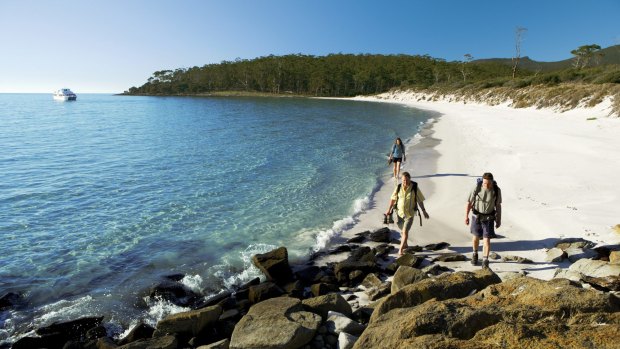
One of Maria Island's sweeping bays.
The first thing I see as I step off the afternoon ferry from Triabunna onto Maria Island is a wombat, snuffling along the path.
I fumble desperately for the camera, then notice that nobody else is paying it any attention. I soon see why. There are wombats everywhere.
At dusk the slopes are dotted with wombats, wallabies, kangaroos and handsome Cape Barren geese. Behind the tents, charming little Tasmanian pademelons, some with young in the pouch, hop about. There are currawongs and green rosellas, scarlet robins and silvereyes.
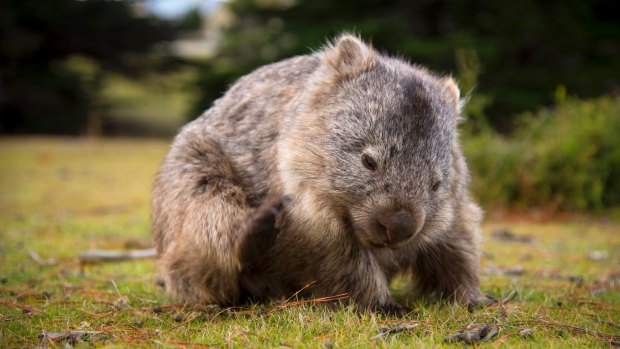
There are wombats everywhere.
I don't think I've ever seen as much Australian fauna together in one place outside a wildlife park.
"It's paradise here," ranger Donna tells me. I'm hoping Heavenly Paradise won't have coin meters on the hot showers, but that's a quibble; this little treasure a couple of hours from Hobart ticks most of the boxes required for Earthly Paradise.
Now a national park, Maria Island is about 20 kilometres long, fringed by white sand beaches. Rising 700 metres from the thick forest in the middle is Mount Maria, with a rocky outcrop known as Bishop and Clerk perched on the island's northern end.
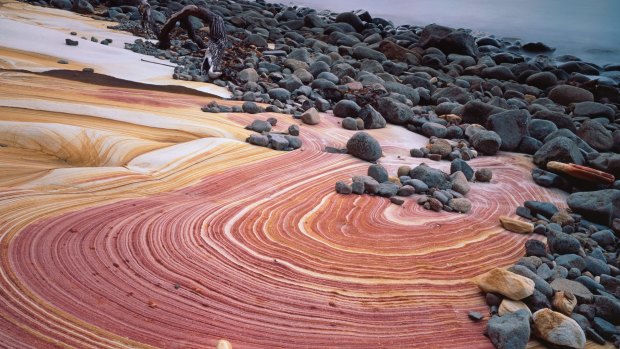
Maria Island sports spectacular features from many geological ages, such as the Triassic sandstones of the Painted Cliffs.
The picturesque white-painted buildings near the wharf are left over from the island's time as a convict settlement (1825-32). Bits of rusty machinery, whale skeletons and abandoned industrial buildings are relics of its past use as a farm, whaling station, vineyard and cement quarry.
But all noisy commercial activity ceased here decades ago. Now there are no cars other than a few National Parks vehicles, and visitor numbers are limited by the capacity of the 48-seater ferry. My fellow passengers are a few German backpackers and a professional wildlife cameraman.
The basic facilities also ensure that Maria Island appeals only to those who are prepared to forgo five-star luxury in exchange for five-star scenery.
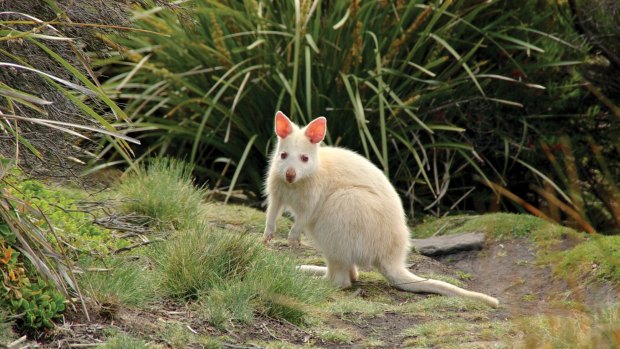
An albino wallaby.Credit: Tourism Tasmania
In the old Penitentiary, former convict cells have been converted to simple bunkhouses. There's a small museum in what was once a 19th-century guesthouse, ostentatiously named The Coffee Palace. It's BYO coffee to Maria Island now.
I select a campsite and get some dinner cooking on the gas barby. Soon enough the tent is pitched, the belly is full and the evening is ahead of me. There is no mobile phone coverage and no internet access. It's amazing how much more time there is in a day when they're not available. So I take a torch and go looking for devils.
Over the past three years, 28 Tasmanian devils have been released on the island, to quarantine them from the deadly facial cancer ravaging the mainland population. They're thriving, to the extent that there are more than 90 of them now. So I've been told. They're all hiding tonight.
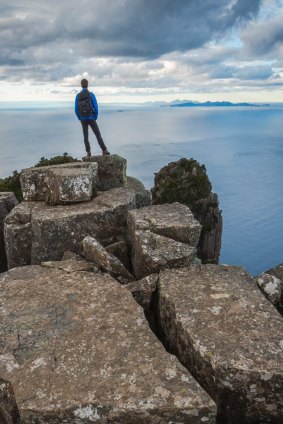
A rocky perch.
Not to worry; the sunset is spectacular, the sea laps gently on the beach and there's not a breath of wind. I get some quite satisfactory shots and I bet that pro cameraman is doing likewise. I wonder if he's found a devil?
Next morning I'm up at dawn to walk through open forest to the Painted Cliffs, formations whose colourful layers of sandstone attract every visitor with a phone camera.
The walking becomes considerably more strenuous when I follow another well-marked track steeply uphill past the sheer Fossil Cliffs, towards Bishop and Clerk – a four-hour circuit in total, requiring some scrambling over the loose dolerite scree of a landslip.
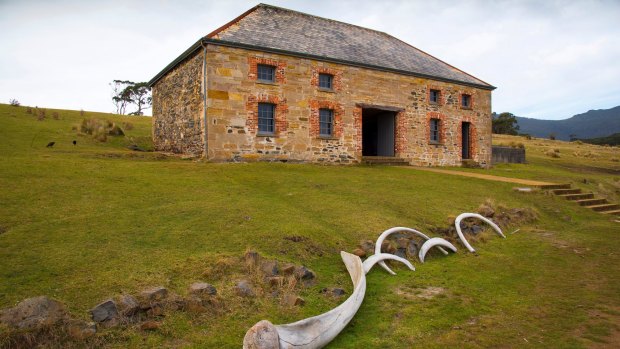
Echos of Maria Island's history.
With another dinnertime approaching, I lug my provisions over to the cooking shelter. And damn, my camera's in the tent! Because foraging for scraps below the dining tables, between the legs of a lot of excited campers, is a Tasmanian devil.
"She's got it too good here," the rangers tell us. "We'll be moving her soon before she forgets how to be wild."
I've had it pretty good too. A couple of days are too short in this quietly wild paradise.
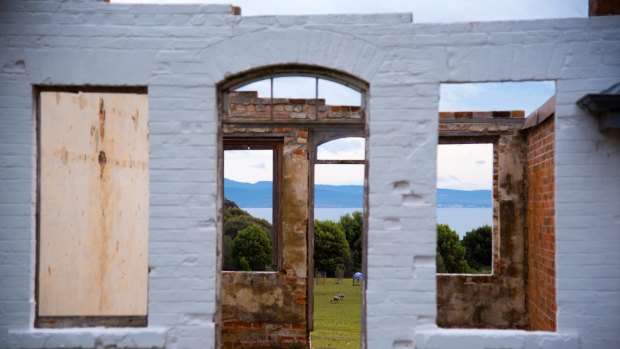
Maria Island Tasmania
See also: Six of the best classic Tasmanian hikes
See also: The untouched Australian islands that were home to an unspeakable horror
TRIP NOTES
MORE INFORMATION
GETTING THERE
Triabunna is a 90-minute drive east of Hobart. Tassielink buses run twice daily (weekdays) and once a day (weekends and holidays) from Hobart Visitor Centre. Cost $20.70. The ferry to Maria Island runs twice daily, takes 30 minutes and costs $35 return. See mariaislandferry.com.au
STAYING THERE
Double rooms in the Penitentiary cost $44 per night. Cheaper rates for families, shared dorms and campsites. See parks.tas.gov.au and follow the links to Maria Island.
ADVENTURING THERE
Tasmanian Expeditions offers guided four-day walking trips to Maria Island (not tested by Traveller) for $2350 and also includes two nights' camping on the island as part of their East Coast Self-Guided Cycle tour. See tasmanianexpeditions.com.au or phone 1300 666 856.
Richard Tulloch was a guest of Tourism Tasmania and Tasmanian Expeditions.
Sign up for the Traveller Deals newsletter
Get exclusive travel deals delivered straight to your inbox. Sign up now.